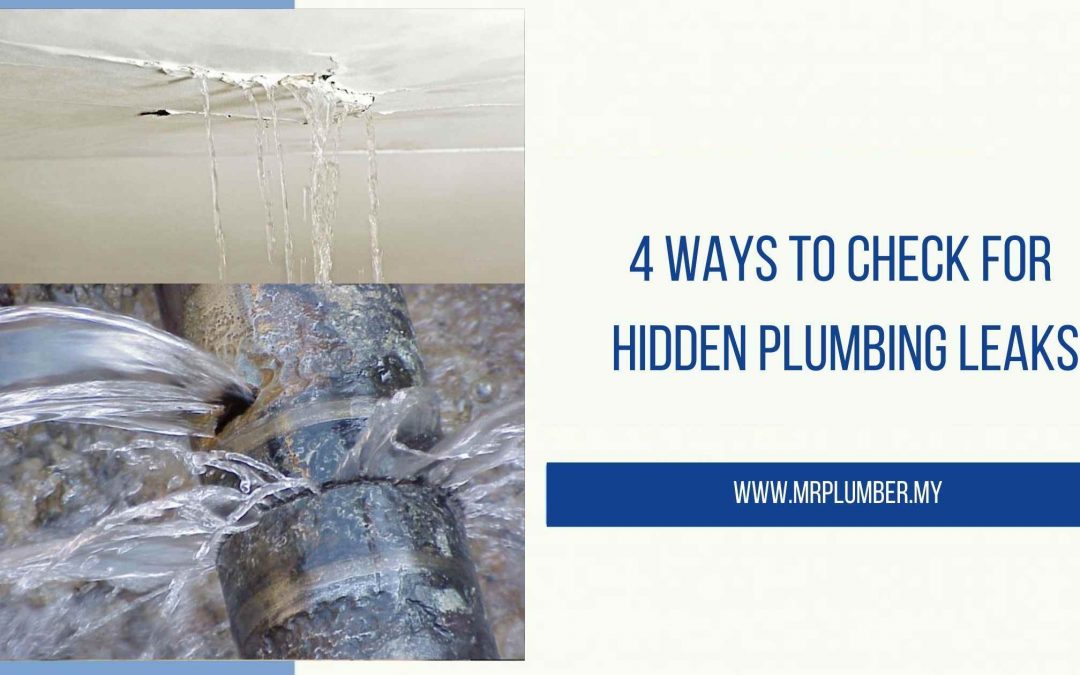Are you aware of the methods for detecting plumbing leaks within your household? If the answer is no, then this blog post is tailored just for you. Equipping yourself with the appropriate tools and supplies, any homeowner can swiftly pinpoint possible issues within their plumbing network. Discover the procedures you should follow to uncover concealed leaks right now!
Table of Contents
1. Check All The Faucets
To begin your checking process, go around the house and turn on all of the faucets. This is an excellent way to check for leaks because typically if there are any leaks inside the home’s plumbing, they will happen when water is running through it. If you hear or feel anything unusual when turning on these taps, you may leak somewhere in the plumbing system. Also, if you hear a noise that, at first, seemed like it was inside your walls but is actually coming from your faucet pipes when the water is turned on, consult a professional plumbing specialist immediately.
2. Check The Water Meter
Another way to check for leaks in the home’s plumbing system is by checking your water meter. This is usually located beside one of your meters outside, and it should read the amount of water going into the household. If you notice that your water meter is not reading correctly and increases usage overnight or when no one is home, you may leak somewhere in the plumbing system. You may also want to check for leaks by checking under the house for wet spots, leaks under the hoses after you’ve turned off the water supply, and by sniffing to see if there are any sewer smells coming from outside of the home.
3. Detect Water Leaks from Your Toilet
The toilet is one of the biggest water guzzlers in a home, but toilet leaks often go unnoticed because most people don’t realize how quickly they can add up to gallons of wasted water. This is especially prevalent if there are multiple bathrooms in a household and at least one toilet does not have an automatic shut-off valve. Although it may be challenging to figure out where a leak is coming from when it comes to your toilet, there are ways that you can do so. First, you can tighten the toilet’s supply valve by backing off on the screw at the bottom of the tank. Then, take several pieces of toilet paper and place them one after another into the bowl until they fill up with water. When you have placed several pieces in and begin to notice that the water level is decreasing, then you may have found your leak source!
4.Perform a Visual Inspection at your home
It is also important to check for plumbing leaks visually. In order to do this, you can take a flashlight and go outside underneath the house. With the flashlight on, you’ll be able to see any water that is pooling on the ground. Sometimes, you can also hear a trickling sound coming from outside of your home when you turn on the sink faucet in the kitchen, bathtub, or toilet. If you are unsure about what this noise may be, inspect it further so that you can determine if it is coming from your plumbing system.
Please use caution when checking for leaks in your plumbing system. It is recommended that you turn off all of your home’s faucets during this process to ensure the safety of anyone who remains inside of your home while you are doing these tests. Make sure to document everything that you do and check for leaks in your plumbing systems and appliances periodically as well to ensure no major problems arise.
Conclusion
The plumbing in your home is a complex system that often goes unnoticed until it becomes an issue. While you may see the pipes under your sink or when you take out the trash, there are other areas of plumbing within your house that might be leaking without being noticed. If you want to keep your home’s plumbing system from becoming damaged and costly, it is important that you know how to check for leaks. By performing these simple safety checks on a regular basis, you can determine what the source of the leak is, as well as prevent further issues from occurring.

